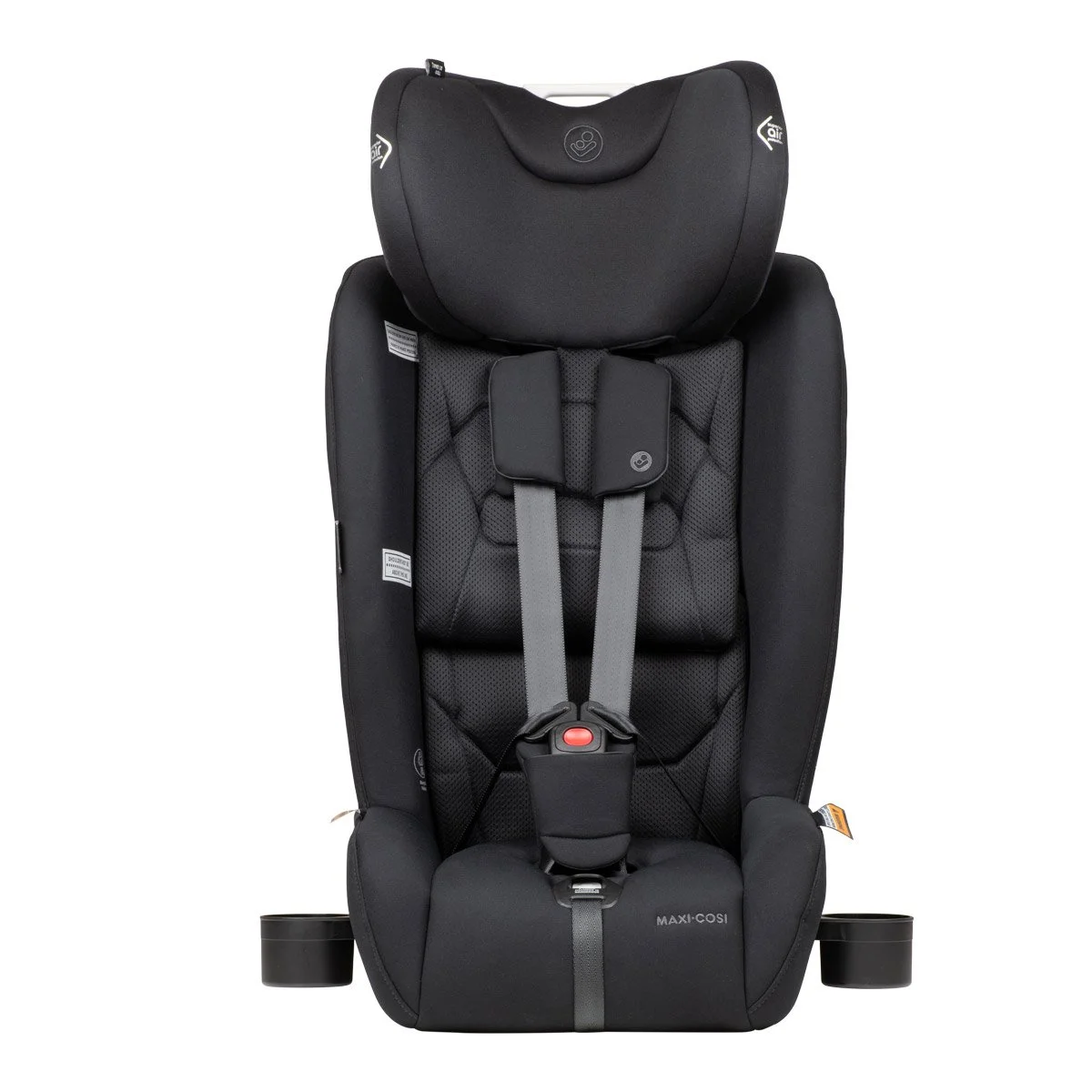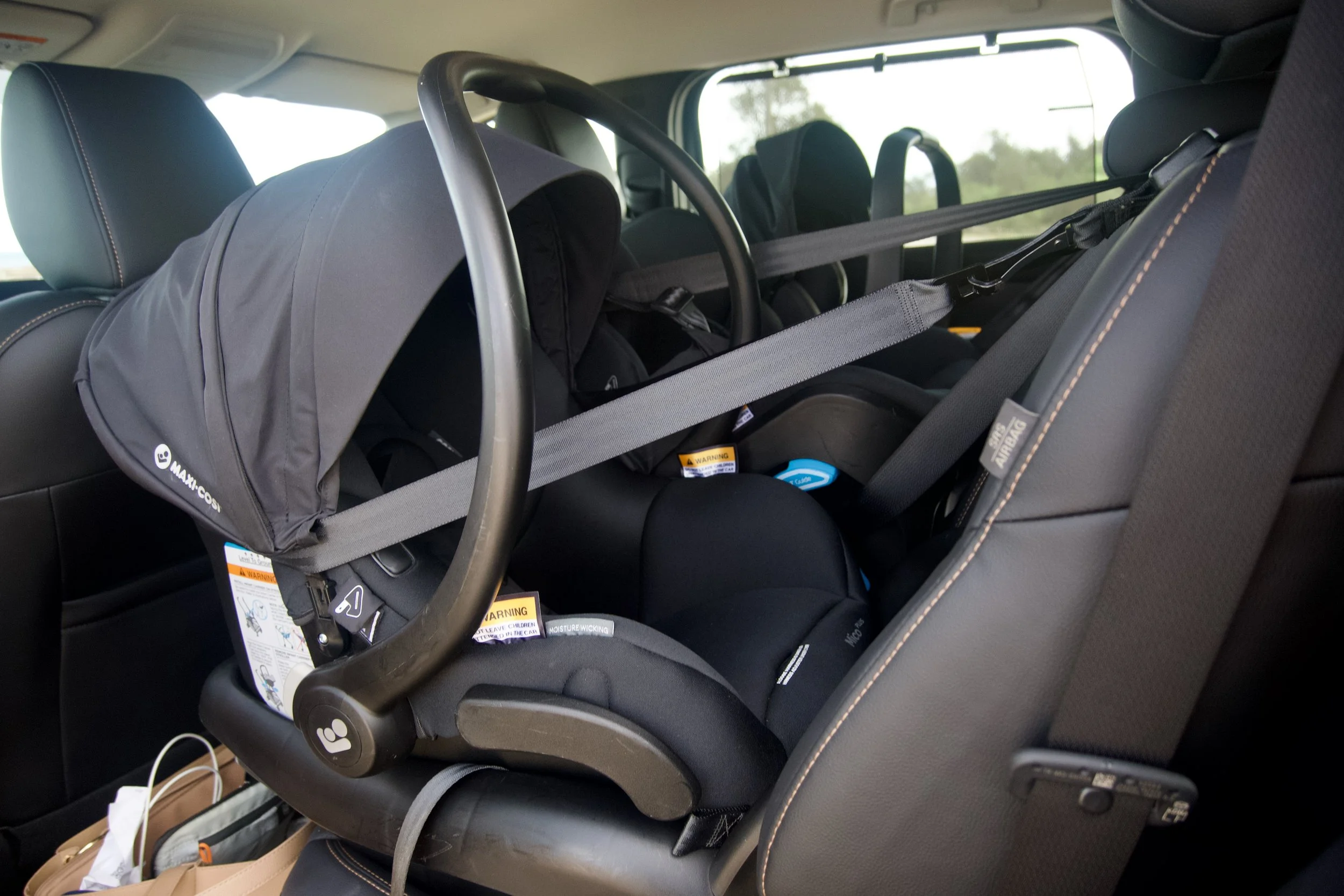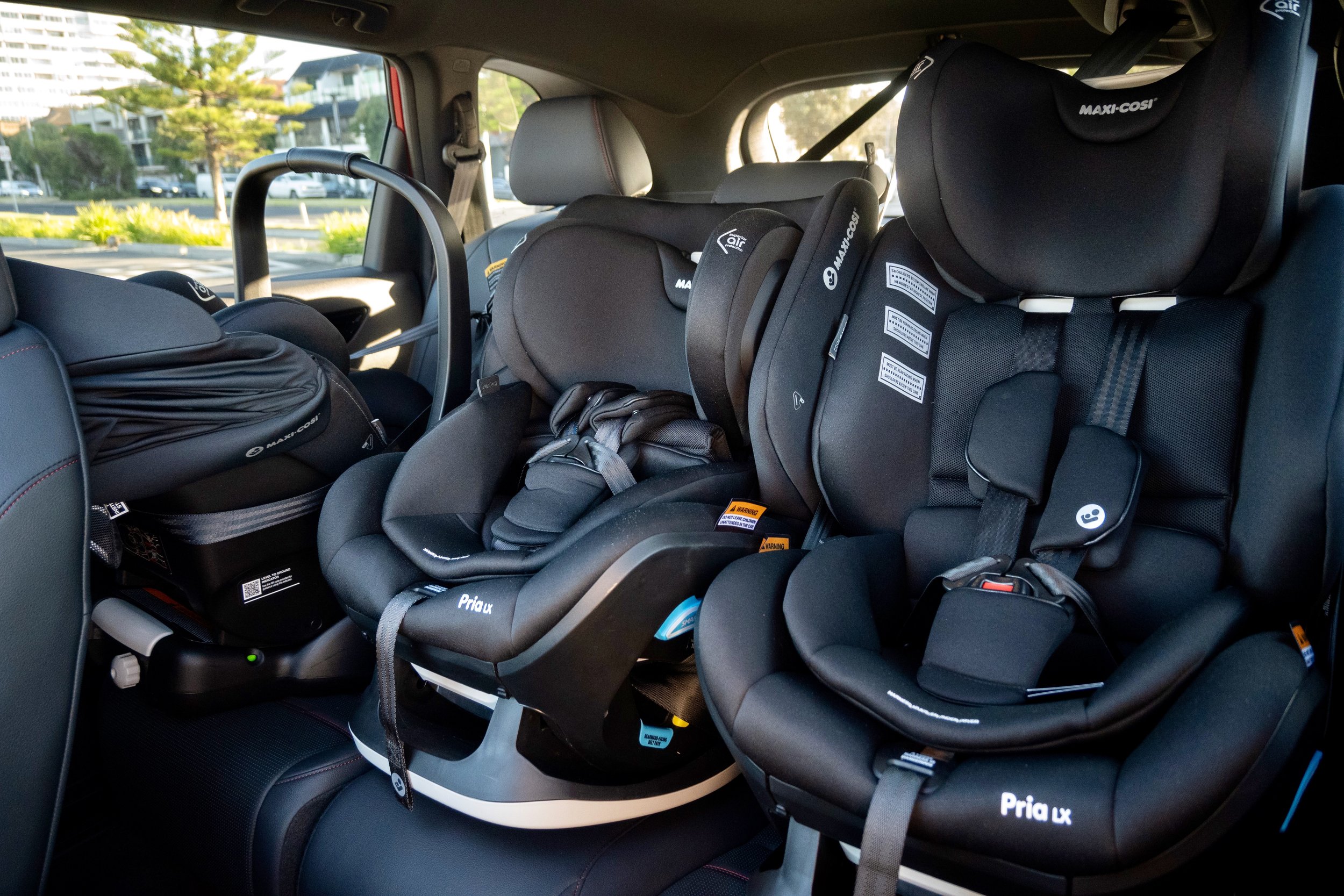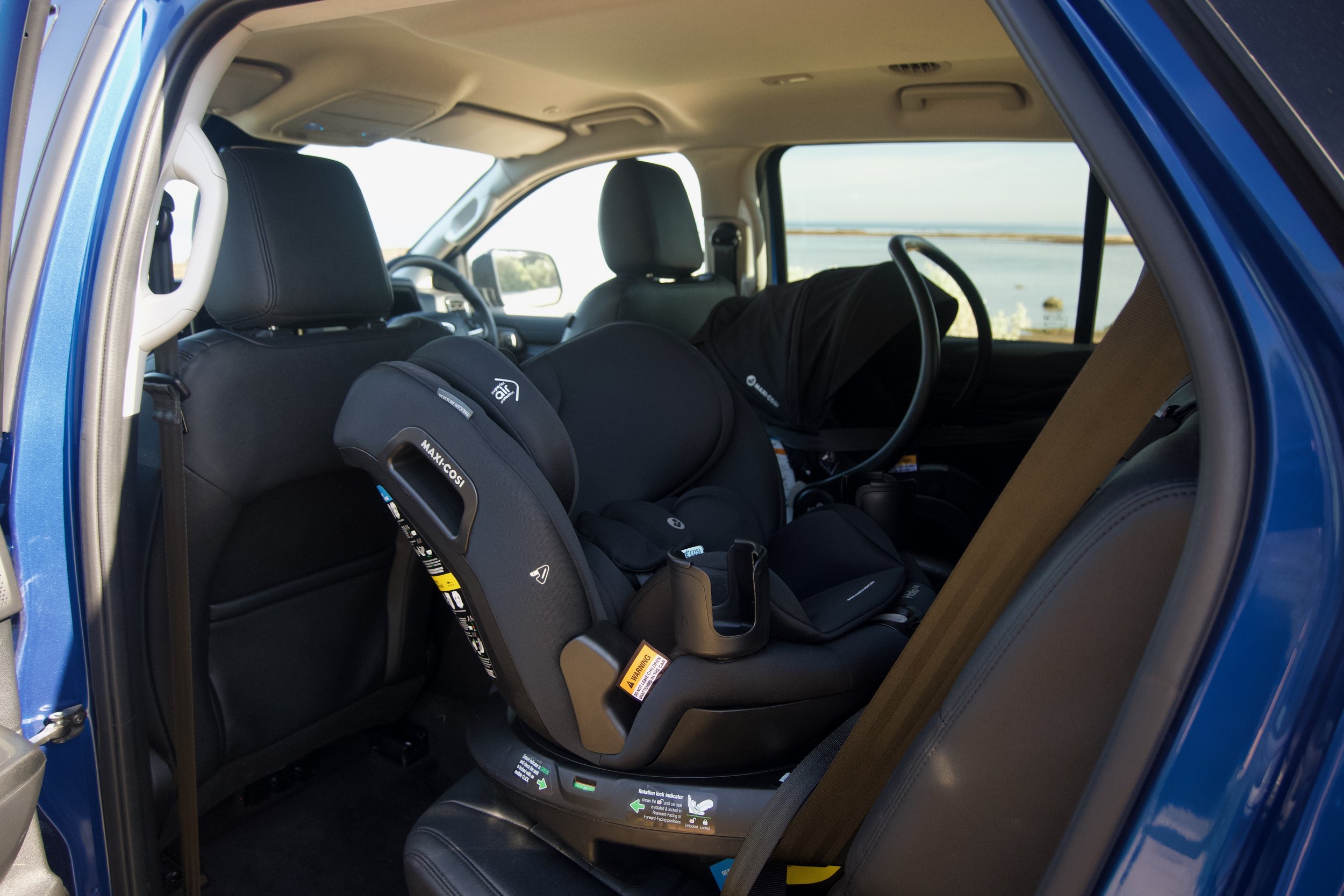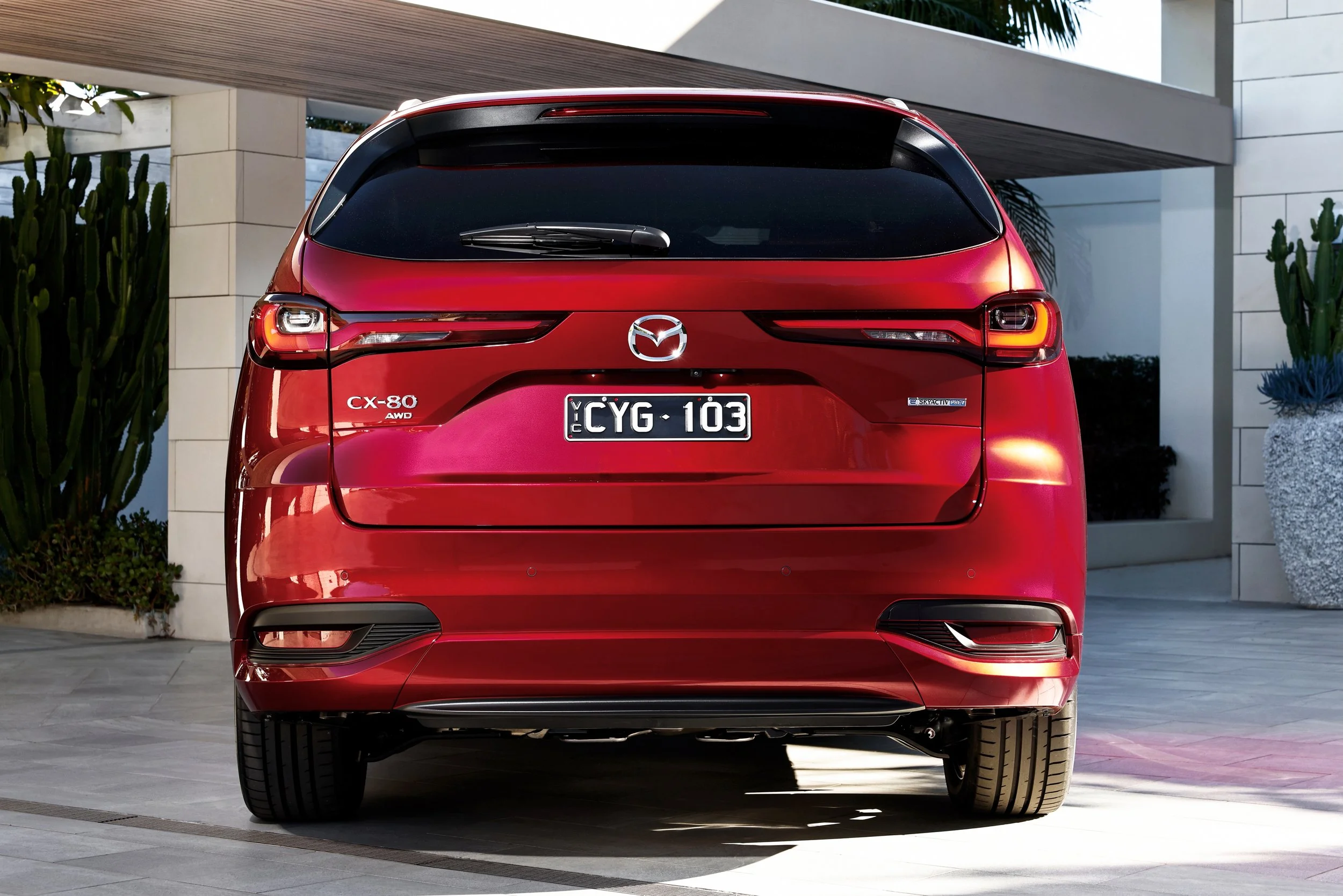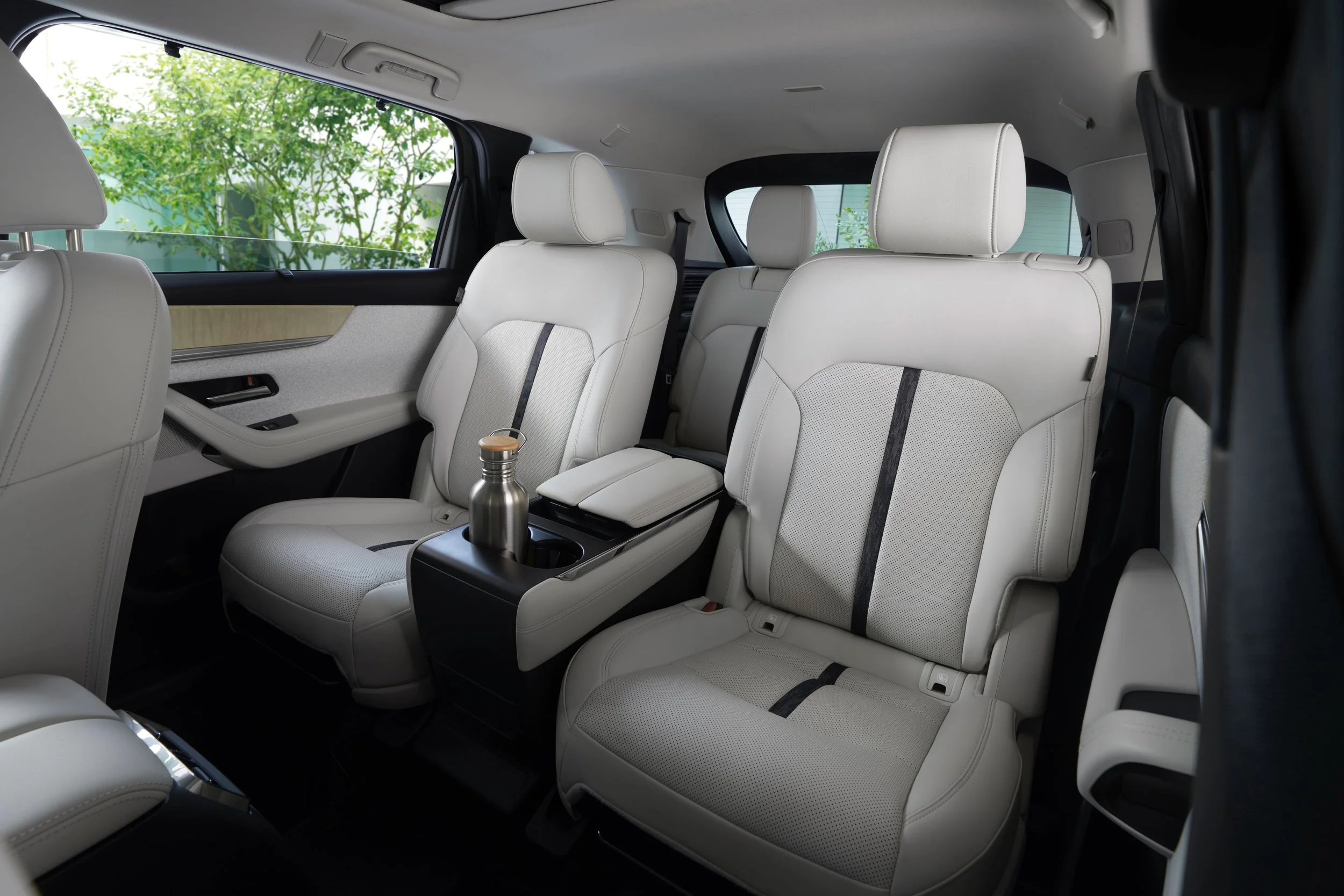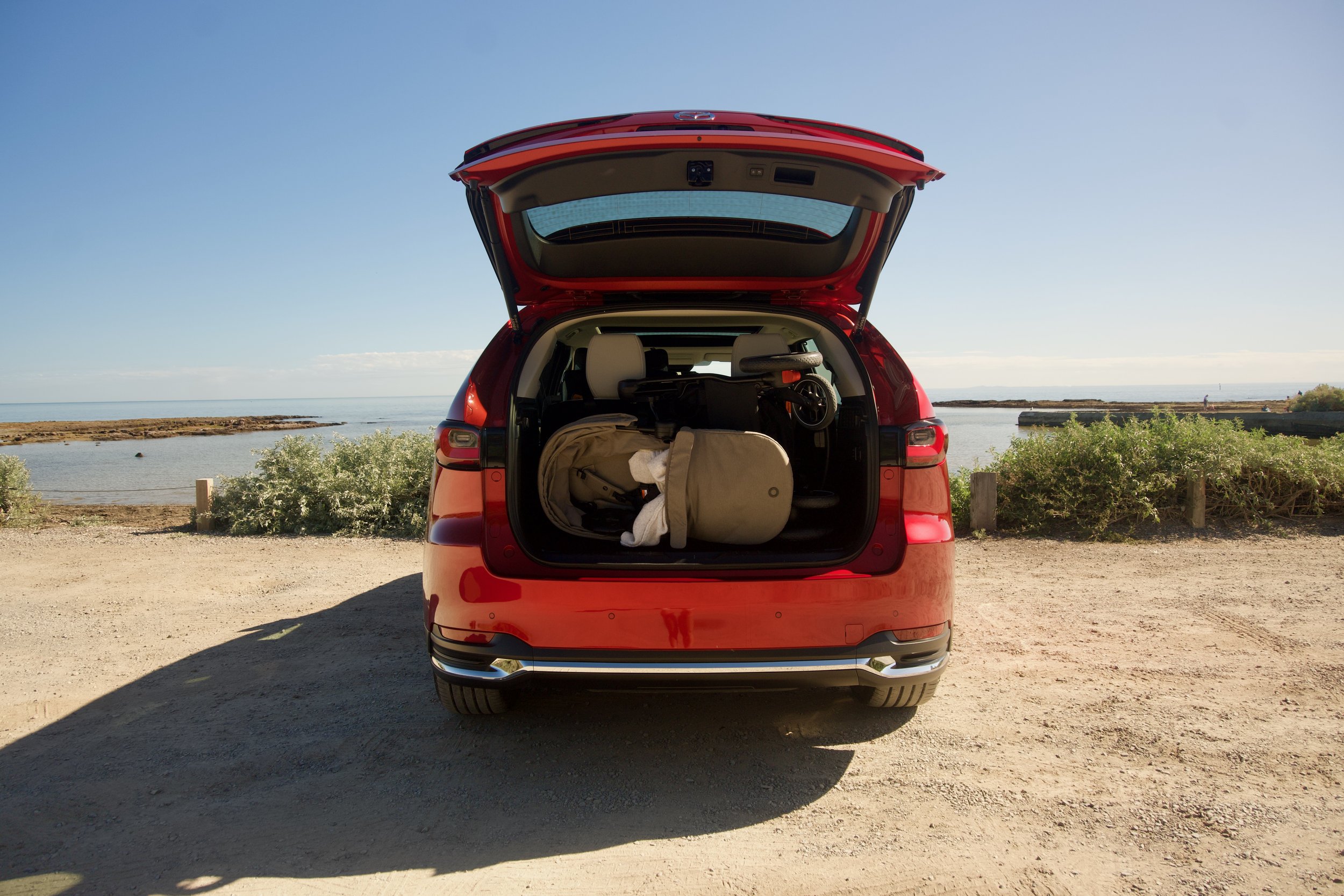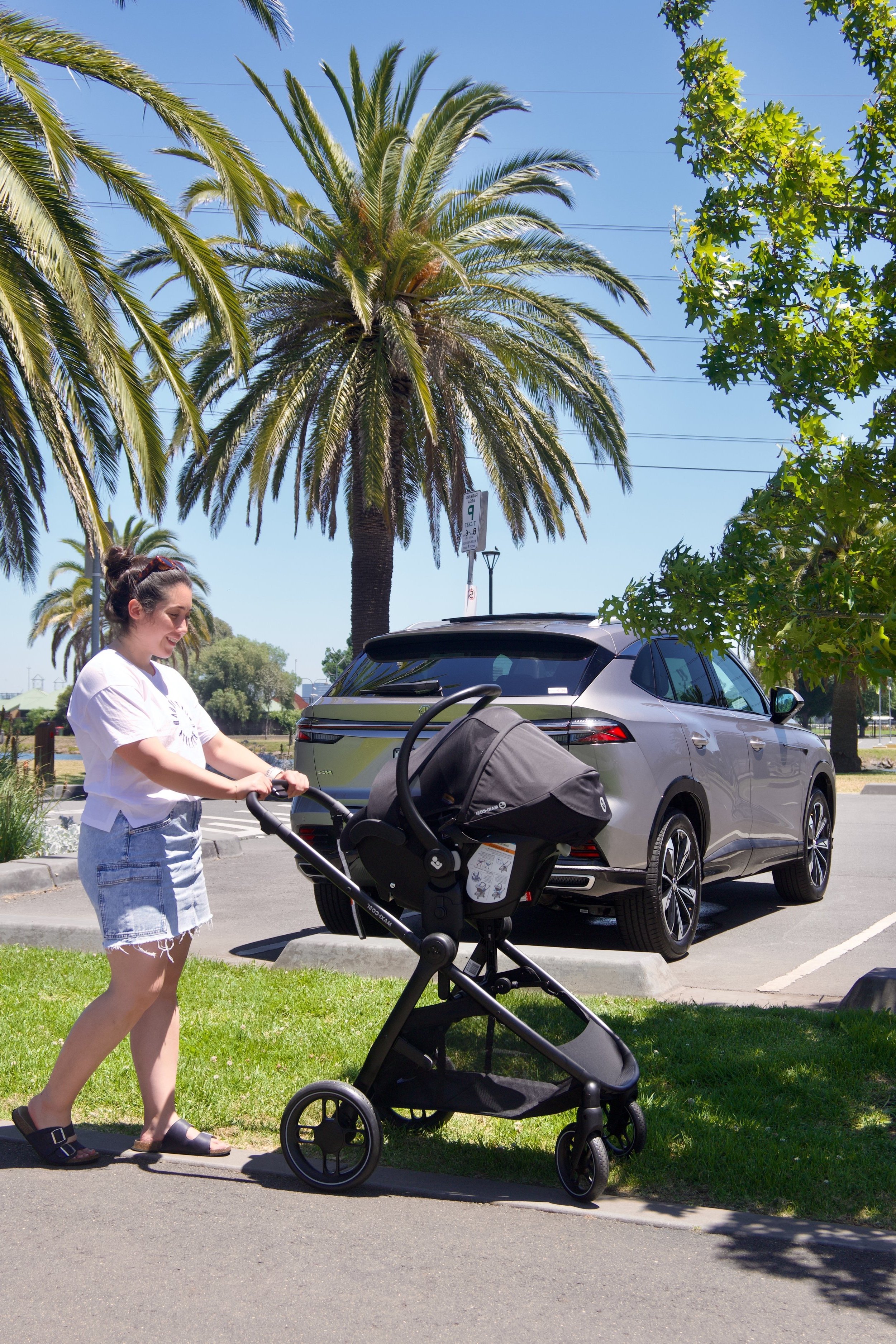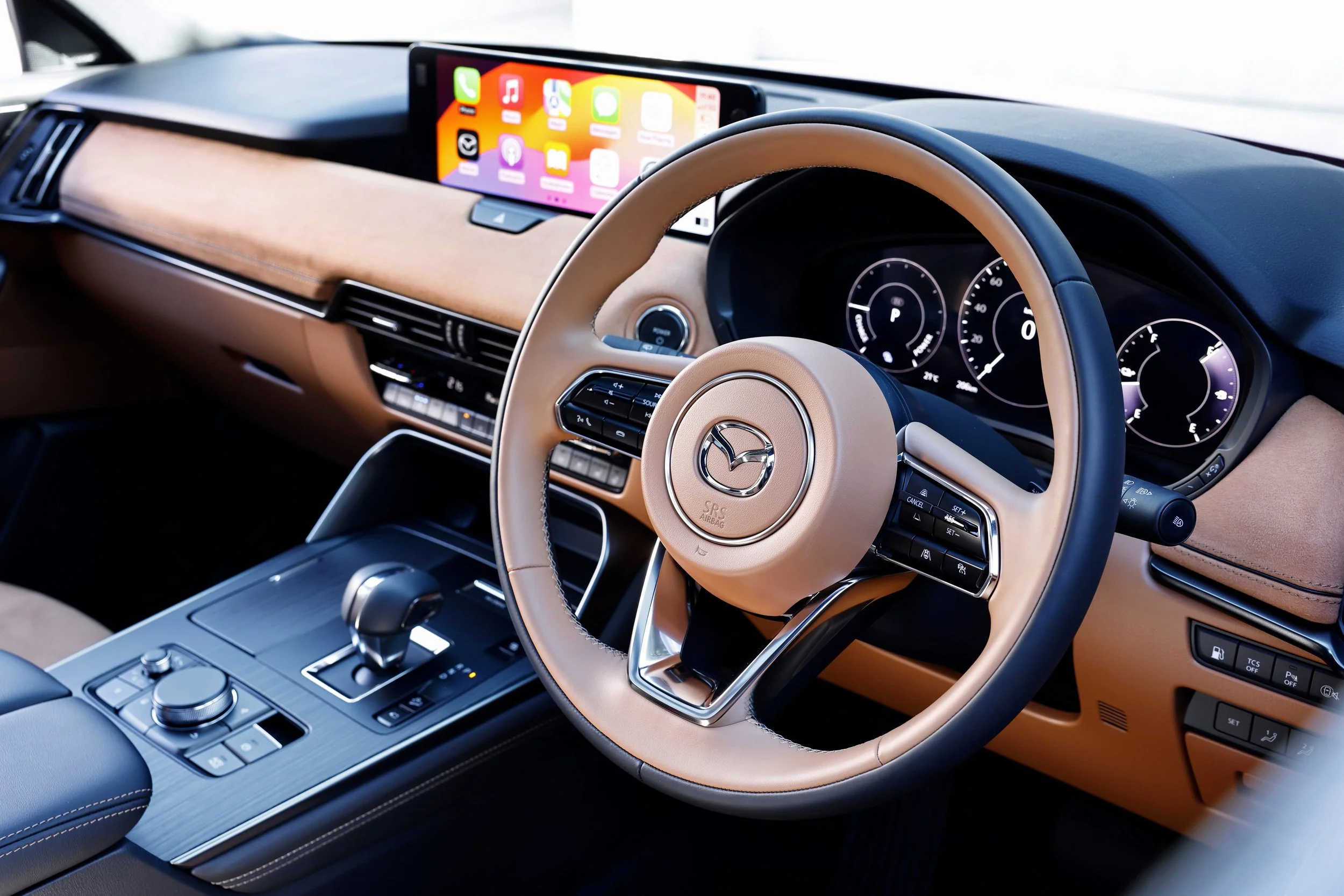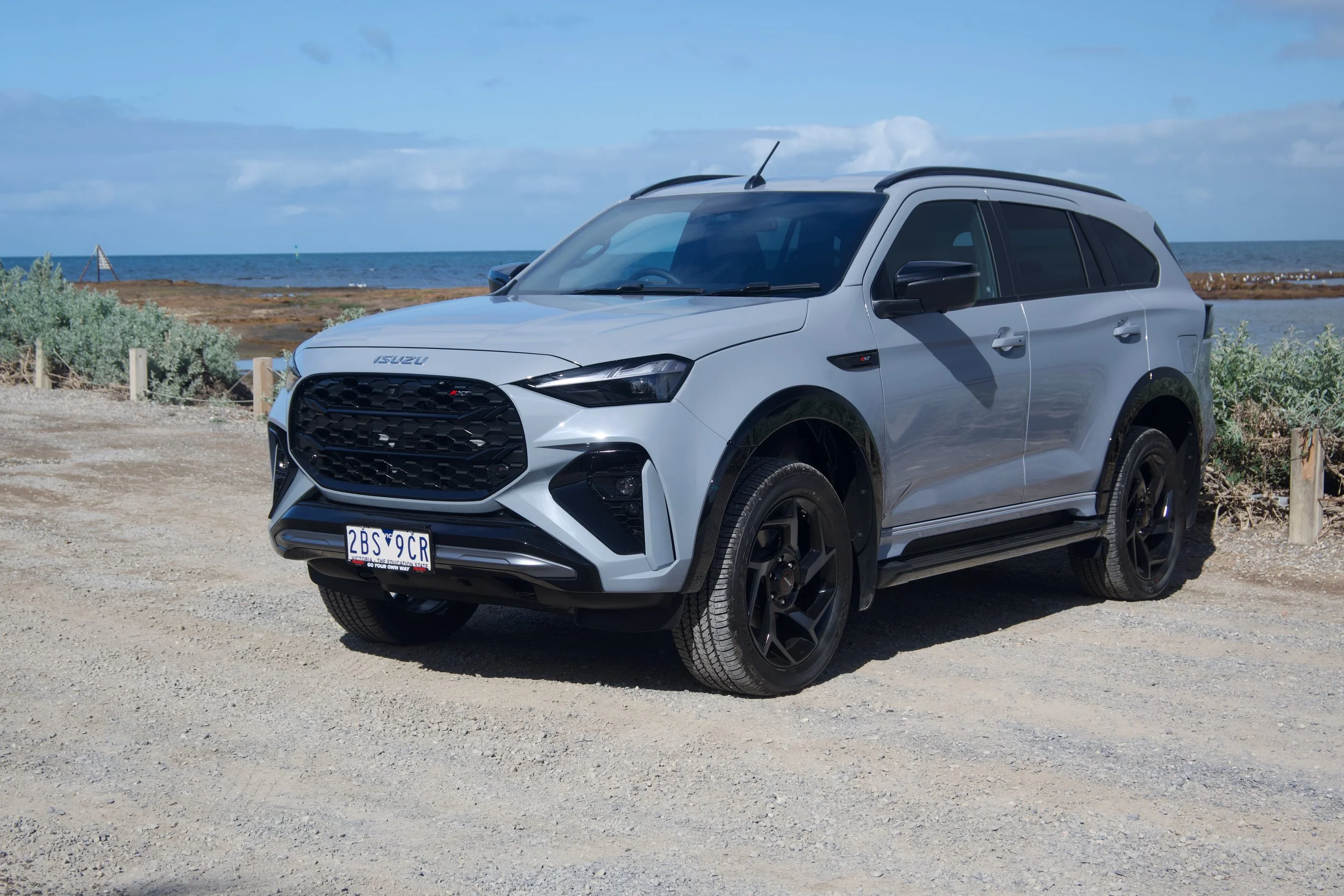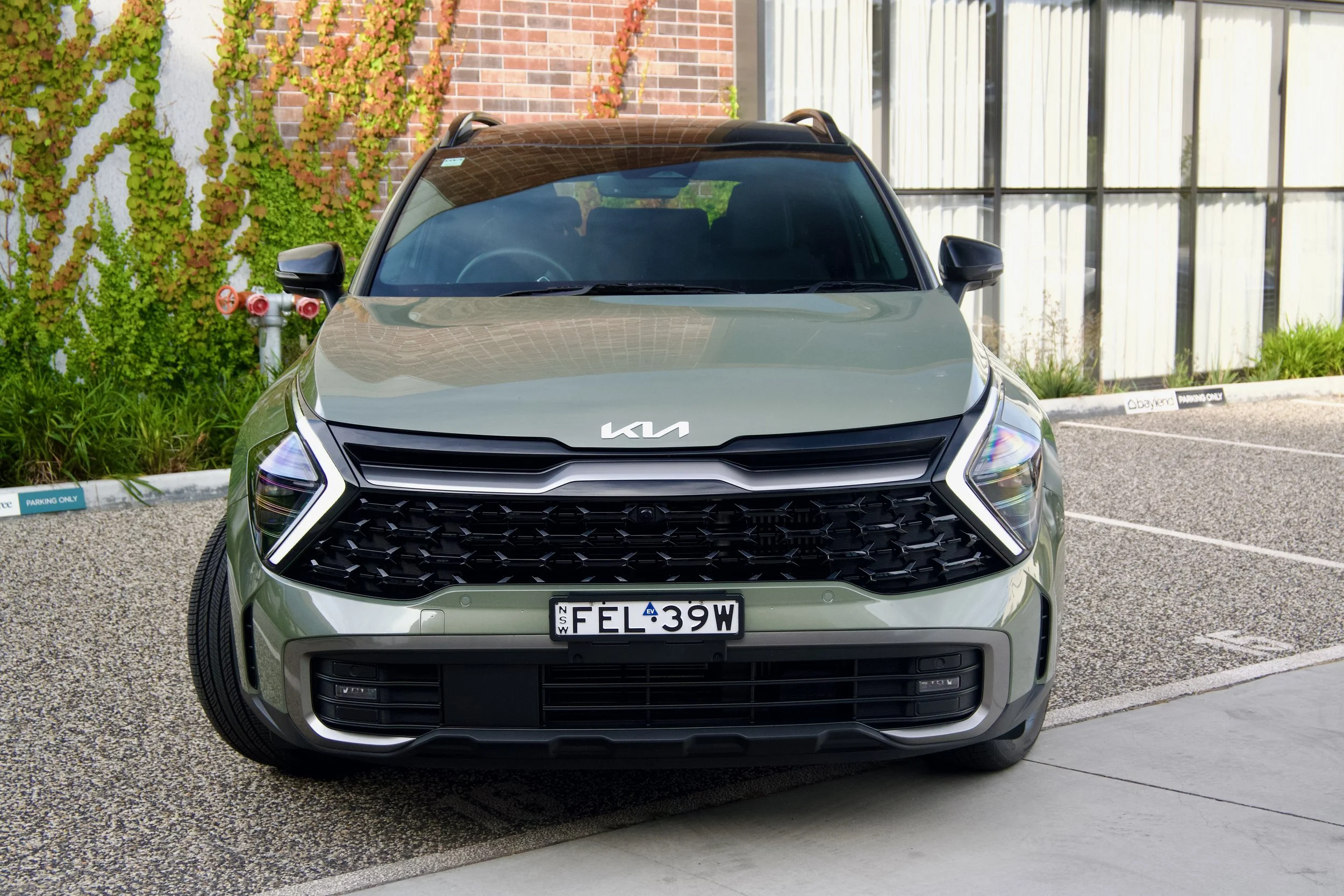2025 Mazda CX-80 family review: Could this be Australia’s next 7-seater luxury SUV?
The 2025 Mazda CX-80 is one of Mazda’s most anticipated SUVs to hit the Australian market, replacing the outgoing and ever-so-popular CX-8.
As Mazda’s latest 7-seater, it combines premium styling, and a suite of safety technology with the everyday practicality families are looking for.
Competing against the Toyota Kluger, Kia Sorento, and Hyundai Santa Fe, the CX-80 positions itself as a luxury family SUV that offers five top-tether points, large boot space when only using 5 seats, and offers some impressive fuel economy figures.
We tested the Mazda CX-80 Touring diesel AWD (3.3L inline-six with hybrid technology) to see how it performs as a real-world family car. From fitting three child seats across the second row, to testing its third-row usability, boot storage with a full-size pram, and fuel efficiency on suburban school runs, this review is focused on how the CX-80 could be the next top-selling 7-seater under the Mazda umbrella.
Child seat and interior flexibility is a key highlight of the CX-80. In the 7-seat configuration, there are 5 top tether anchors and 2 ISOFIX points (both located in second row), while the 6-seat version offers 4 top tether anchors and 2 ISOFIX points. We managed to fit a Maxi Cosi Pria LX rear-facing and two baby capsules in the second row – a tight squeeze, but possible with compact car seats. The third row can also accommodate two child seats with its dedicated top tether anchors, giving large families more flexibility.
On the road, the CX-80 diesel Touring impressed us with its quiet cabin, smooth ride, and fuel efficiency. We averaged 5.7L/100km, just above Mazda’s official 5.2L/100km figure, which is excellent for a large 7-seater SUV. Features like the 360-degree camera (standard across the range), adaptive cruise control, and premium interior finishes make driving this SUV feel both practical and luxurious.
Did you know Baby and Car uses a trusted network of dealerships Australia-wide to find you the best price for your next brand new car? With tailored Australian-based support, enquire today. Find out more here.
Mazda CX-80 pros & cons: What you should know before buying
Pros:
Five top tether points in 7-seat configuration: This isn’t as common as you think! It’s a BIG selling figure for the Mazda 7 seat range.
Ability to fit three child seats across the second row: Again not very common in large SUVs.
Great safety tech as standard including a 360-degree view camera
Impressive diesel fuel economy: Mazda claims 5.3L/100km for the diesel variants and we got 5.7L/100km which is still really impressive for a in-line six-cylinder engine.
Wide-opening doors (90 degrees): Another Mazda feature as standard across their entire vehicle line-up
Luxury feel without luxury brand price tag: If you’re looking for BMW or Audi quality but don’t want the price tag
Cons:
Boot space is minimal (258L) with all 7 seats up: This might be a deal breaker for some families.
Accessing third row is tricky if second row has car seats installed: Even when using ISOFIX this can be tricky to make space rear facing.
Fuel economy is excellent for diesel but petrol version (8.4L/100km) is less efficient
All seat belts mounted to the car chassis: Gets in the way when accessing the third row if you have a child seat installed.
Third-row air vents are at leg level: Not ideal in certain weather conditions
Need a car seat installed? We’re here to help…
Mazda CX-80 price guide – How much does the 2025 Mazda CX-80 cost?
The Mazda CX-80 is available in four trim levels, and three powertrain and one drivetrain option: all together offering 10 variants. Pricing as follows:
2025 Mazda CX-80 Pure turbo petrol AWD: $56,195 before on-road costs
2025 Mazda CX-80 Touring turbo petrol AWD: $63,195 before on-road costs
2025 Mazda CX-80 Touring turbo diesel AWD: $65,195 before on-road costs (as tested)
2025 Mazda CX-80 GT turbo petrol AWD: $70,195 before on-road costs
2025 Mazda CX-80 GT turbo diesel AWD: $72,195 before on-road costs
2025 Mazda CX-80 Azami turbo petrol AWD: $75,395 before on-road costs
2025 Mazda CX-80 Touring plug-in hybrid petrol AWD: $76,245 before on-road costs
2025 Mazda CX-80 Azami turbo diesel AWD: $77,395 before on-road costs
2025 Mazda CX-80 GT plug-in hybrid petrol AWD: $84,048 before on-road costs
2025 Mazda CX-80 Azami plug-in hybrid petrol AWD: $90,808 before on-road costs
(Exact driveway pricing will vary depending on location and registration type; check with (as tested) or your local dealership for up-to-date costs.)
Want to save money? Baby and Car uses a trusted network of dealerships Australia-wide to find you the best price for your next brand new car. With tailored Australian-based support, it’s free to get a quote. Find out more here.
Mazda CX-80 engine options: Petrol, diesel and plug-in hybrid
The 2025 Mazda CX-80 comes with three engine and one drivetrain options:
3.3L in-line six-cylinder turbo petrol hybrid AWD: 209kW of power & 450Nm of torque
3.3L in-line six-cylinder turbo diesel hybrid AWD: 187kW of power & 550Nm of torque
2.5L in-line four-cylinder petrol plug-in hybrid AWD: 241kW of power & 500Nm of torque combined
The 2025 Mazda CX-80 is available with three engine options, all paired with all-wheel drive (AWD). The line-up includes a 3.3L in-line six-cylinder turbo petrol hybrid with 209kW of power and 450Nm of torque, a 3.3L in-line six-cylinder turbo diesel hybrid producing 187kW and 550Nm of torque, and a 2.5L in-line four-cylinder petrol plug-in hybrid (PHEV) that combines 241kW and 500Nm with an electric driving range of up to 65km.
The turbo petrol and diesel 7-seat hybrids use Mazda’s M Hybrid Boost system, which charges a small battery automatically while you drive. This means you get the benefit of improved fuel economy and smoother acceleration without ever needing to plug the car in – perfect for busy families who want a low-maintenance family SUV.
In contrast, the CX-80 PHEV has a larger battery that you can charge at home or via AC public EV chargers. A full charge gives enough range to cover most school runs, daily commutes, or shopping trips using only electric power. Once the 65km electric range is used up, the petrol engine seamlessly takes over, so there’s no risk of being left stranded like in a fully electric car.
For families who tow caravans or trailers, or those regularly travelling long distances, the diesel hybrid CX-80 is the best pick thanks to its 550Nm of torque and 2,500kg towing capacity. The plug-in hybrid (PHEV) is the perfect option for households with home charging, as it allows you to complete most weekly driving without using petrol, yet still have petrol power for weekend adventures or road trips.
Check out other Baby and Car content:
Is the Mazda CX-80 fuel-efficient?
The 2025 Mazda CX-80 offers three engine options. Here are the official fuel consumption figures:
3.3L turbo petrol: 8.4L/100km (combined)
3.3L turbo diesel: 5.2L/100km (combined)
2.5L petrol PHEV: 2.7L/100km (combined)
The 2025 Mazda CX-80 offers strong combined fuel economy across its trio of powertrains, making it one of the more efficient 7-seater SUVs on the market. The 3.3L turbo petrol hybrid returns a combined figure of 8.4 L/100 km, while the 3.3L turbo diesel hybrid is rated at 5.2 L/100 km and outperformed itself during our testing—averaging 5.7 L/100 km on suburban and occasional freeway driving around Melbourne (80–100 km/h with a fully loaded family car). The 2.5L plug-in hybrid (PHEV) impresses with a combined rating of just 2.7 L/100 km, thanks to its 65 km electric-only range—perfect for nearly all weekday school runs and errands in electric mode.
To put this in context, the Toyota Kluger hybrid is rated at 5.6 L/100 km, and the Hyundai Santa Fe hybrid clocks in around 5.6 L/100 km combined, making the diesel CX‑80 slightly more efficient than some of its rivals. Keep in mind that our 5.7 L/100 km figure came with the car packed to the brim—which is realistic for families—but real-world fuel economy can vary depending on load, driving style, and conditions.
In simple terms, if you're after a fuel-efficient family 7 seat SUV and mostly do long trips or towing, the diesel hybrid is hard to beat. The petrol hybrid offers respectable efficiency for everyday driving but not ideal for a hybrid when compared to the Kluger and Santa Fe, while the PHEV can eliminate petrol use entirely on short trips if regularly charged—meaning you could drive all week without filling up—and still have petrol power for weekend getaways.
Mazda CX-80 towing capacity: Can it handle a caravan?
3.3L turbo petrol: 2500kgs
3.3L turbo diesel: 2000kgs
2.5L petrol PHEV: 2500kgs
The 2025 Mazda CX-80 offers very competitive towing capability across its range, keeping up with rivals as an option for families who need to haul caravans, boats, or trailers.
Both the 3.3L turbo petrol hybrid and the 2.5L plug-in hybrid (PHEV) can tow up to 2,500kg (braked), which is on par with other leading 7-seater SUVs in Australia. The 3.3L turbo diesel hybrid is rated slightly lower at 2,000kg (braked), which is a bit disappointing considering it has more torque out of all the engine options.
With all-wheel drive (AWD) standard across the range and features like a dedicated towing mode, the CX-80 petrol models are well-equipped for family road trips where towing capacity is essential. It is worth noting the Kluger Hybrid is only rated to 2000kgs braked, while the Santa Fe hybrid is only 1650kgs.
Mazda CX-80 interior & space: How practical is it for families?
The 2025 Mazda CX-80 feels like it’s been designed with families front of mind, offering a mix of child seat flexibility, clever storage solutions, and premium cabin features that make daily life easier.
In the 7-seat configuration, there are five top tether points and two ISOFIX points (both in the second row), which is more generous than many rivals. While the third row doesn’t offer ISOFIX –something we’d love to see given the larger seat width, Mazda’s decision to include five top tether points across the CX-80 and CX-90 range will appeal to parents who need to secure more than three child seats.
Installing child seats is straightforward but requires some planning. The 60/40 split second row can make it tricky to access the third row when you have bulky rear-facing seats installed. In fact, it’s best to install child seats in the third row first, as reaching the anchors after the second row is set up is challenging and next to impossible. Like most 3-row SUVs, the third row is best suited for kids due to tighter legroom and limited access angles—especially if you have any rear-facing seats in the second row. Families needing easier third-row access may prefer the 6-seat configuration, which adds captain’s chairsin the second row.
Interior storage is another strong point. The door bins fit 1L drink bottles, and there are multiple cup holders and clever storage spaces throughout the cabin. Touring and higher trims add rear window sunshades in the second row—an underrated feature for parents and again not included in many of the CX-80’s rivals. The 90-degree rear door opening makes loading bulky child seats or getting kids in and out much easier compared to many 7-seater SUVs on the market.
Cabin comfort is well thought out. There’s tri-zone climate control, though the third-row air vents are oddly positioned at leg level on the wheel arches. On the tech side, Mazda’s infotainment system is simple to use with wireless Apple CarPlay and Android Auto, plus a rotary dial for safer control while driving, it’s worth noting if you’re new to Mazda’s the infotainment screen is not touchable all the time and works when the car is stationary. When it’s in motion you have to use the dial.
The leather seats, premium finishes, and interior upholstery options like white or tan elevate the CX-80 into luxury territory, while maintaining the functionality families need. Note these also come with their respective seat layout constraints.
In terms of overall family practicality, the CX-80 rivals options like the Hyundai Santa Fe with its thoughtful interior design, smart storage, and flexible seating layouts. While accessing the third row with car seats installed can be challenging (a common issue across this segment), the CX-80 stands out for its wide-opening doors, five top tether anchors, and overall versatility, making it one of the most family-friendly 7-seater SUVs in Australia.
Want to save money? Baby and Car uses a trusted network of dealerships Australia-wide to find you the best price for your next brand new car. With tailored Australian-based support, it’s free to get a quote. Find out more here.
Mazda CX-80 boot space & storage: How much can it fit?
With 5 seats up: 566L
With 7 seats up: 258L
With all 7 seats in use, you have around 258L of boot space in the Mazda CX-80, which is enough for a few school bags or a compact stroller, but larger prams like our Maxi Cosi Mali won’t fit upright. Families using all three rows may need to compromise, opting for soft bags or smaller grocery loads on busy school runs.
Folding the third row down expands storage to 566L, which comfortably accommodates a full-size pram plus around nine shopping bags, leaving room for extras like a nappy bag or after-school sports equipment. For maximum versatility, folding both the second and third rows opens up 1,971L of flat cargo space.
There’s also a underfloor storage compartment, perfect for tucking away smaller essentials like a first aid kit, a change of clothes, or the retractable boot cover when switching between 5- and 7-seat layouts. The wide-opening tailgate and fairly low loading height make it easy to load heavy prams or large grocery hauls, even if you’re not tall –like me. Touring and higher trims also feature a power tailgate, which is a huge help when juggling kids, shopping, and car keys all at once.
For families who value practicality, the CX-80’s boot space is competitive with rivals like the Toyota Kluger and Hyundai Santa Fe, while offering smart design touches like multiple tie-down points and wide access for everyday family life.
In the market for a new car? Get one on one support with Baby and Car
{CARNAME} safety features: Is it a safe family car?
Intro
Standard across the whole range is the following safety features:
360° view monitor
Auto high beam control headlights
Advanced keyless entry with push-button start
Blind spot monitoring (BSM) with vehicle exit warning
Driver attention alert (DAA) and Driver monitoring system
Electronic brake-force distribution (EBD)
Emergency brake assist (EBA)
Emergency lane keeping with road keep assist and blind spot assist
Emergency stop signal (ESS)
Forward obstruction warning (FOW)
Front cross traffic alert (FCTA)
Hill descent control (HDC)
Hill launch assist (HLA)
ISOFIX child seat anchors (x2)
five top tether points (7 seat) or four top tether points (6 seat)
Lane-keep assist system (LAS)
Front and rear parking sensors
Rear cross traffic alert (RCTA)
Reverse camera
Smart brake support (SBS) with pedestrian and cyclist detection and turn-across traffic assist
Traffic sign recognition (TSR)
Tyre pressure monitoring system (TPMS)
Whiplash-minimising front seats
GT:
Adaptive LED headlights
Azami (adds to GT)
360° view monitor with see-through view
Cruising & traffic support (CTS)
Ambient lighting (interior upgrade that enhances driver visibility)
ANCAP rating: The Mazda CX-80 achieved a 5-star ANCAP safety rating in 2024.
The 2025 Mazda CX-80 has achieved a 5 star ANCAP safety rating in 2024. With a strong safety structure, five top tether points, and a comprehensive suite of driver assistance technology.
The CX-80 scored highly across key ANCAP categories, including adult occupant protection, child occupant protection, and vulnerable road user safety, thanks to features like autonomous emergency braking (AEB), lane-keep assist, and a standard 360° view camera. Mazda has also made sure that all trims—from the Pure to the Azami—come equipped with an impressive range of standard safety features.
These include blind spot monitoring with vehicle exit warning, front and rear parking sensors, adaptive cruise control, driver attention alert, and traffic sign recognition, all of which help make daily driving safer and less stressful. The inclusion of five top tether points and two ISOFIX anchors in the second row makes of the 7 seat configuration means this SUV stand out for families who need secure child seat options.
Want to save money? Baby and Car uses a trusted network of dealerships Australia-wide to find you the best price for your next brand new car. With tailored Australian-based support, it’s free to get a quote. Find out more here.
Mazda CX-80 vs Toyota Kluger vs Hyundai Santa Fe: which one is best for families?
Best for Fuel Efficiency: Mazda CX-80 2.7/100km for the PHEV or 5.2L for the combustion engine hybrid comparison.
Best for Cargo Space: Mazda CX-80 for 7 seats up 258L but with third row down Hyundai Santa Fe which has 628L.
Best for Luxury & Comfort: Mazda CX-80
Best for Towing: Mazda CX-80 2500kg (petrol variants)
Most affordable to service: {CARNAME} ($280 per service for 5 years)
Longest warranty: All have 5 year, unlimited KM
Check out other Baby and Car reviews:
Should you buy the Mazda CX-80 in 2025? Final verdict
The 2025 Mazda CX-80 has proven to be one of the most well-rounded 7-seater family SUVs on the market, blending premium styling, a suite of safety features, and family-first practicality.
What stands out the most is the attention to detail — from the five top tether points, 90-degree rear door opening, and built-in window shades to the impressive fuel economy of the 3.3L turbo diesel hybrid. The fact that all three AWD powertrains (petrol, diesel, and PHEV) are available gives buyers flexibility that few competitors offer, whether you’re looking for towing power, fuel efficiency, or short-distance electric driving.
While the CX-80 isn’t the cheapest large SUV on the market and servicing costs for the diesel (every 10,000km) are higher compared to rivals like the Toyota Kluger, the overall package is still quite compelling. Even the base Pure trim comes well-equipped with safety tech, spacious interior, and thoughtful family-friendly design. The 2.5-tonne towing capacity and boot flexibility (566L) make it as practical for family road trips as it is for daily school runs.
There are a couple of downsides to note. The 60/40 second-row split and seatbelt placement can limit third-row access, especially with bulky child seats installed. Boot space with all 7 seats in use is also limited, which may require some compromises on strollers or grocery loads. For those needing more room, Mazda’s larger CX-90 is worth considering.
Overall, the Mazda CX-80 is a genuine contender for families who want something more premium than a Kia Sorento or Toyota Kluger but without stepping into the high price brackets of luxury brands like BMW and Mercedes-Benz. It’s easily one of our top three 7 seater AWD family SUVs for 2025, sitting alongside the new Hyundai Santa Fe for its blend of comfort, safety, and real-world usability.







